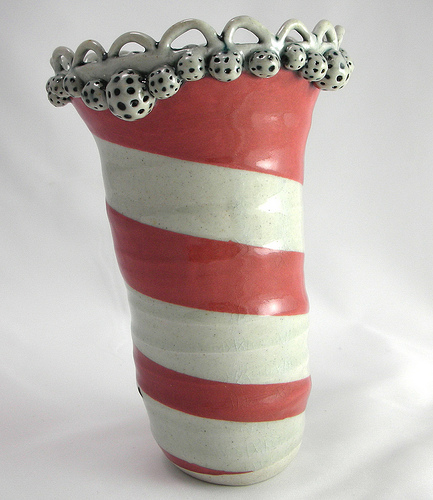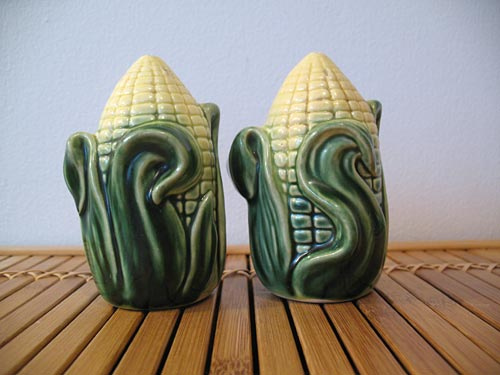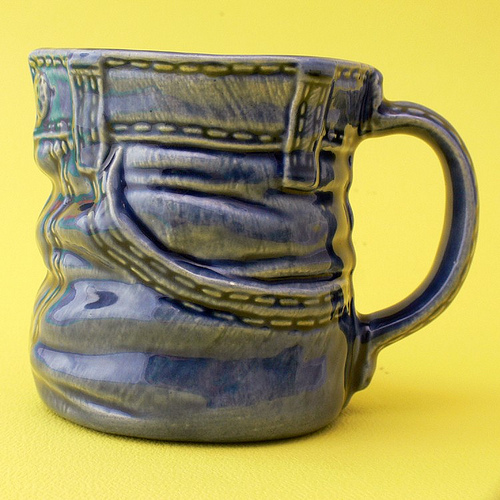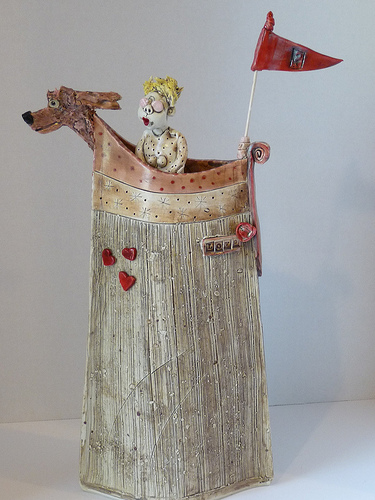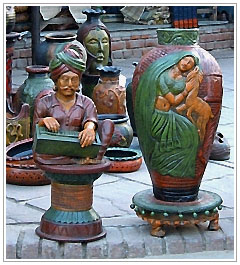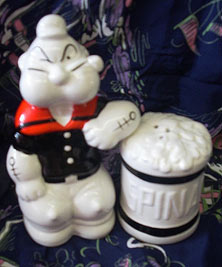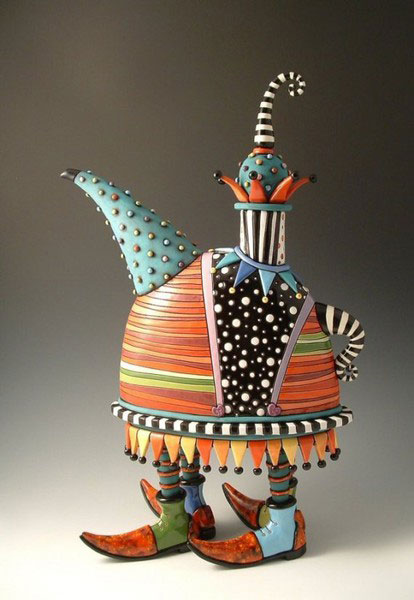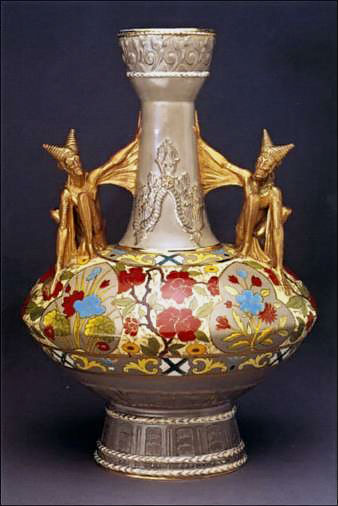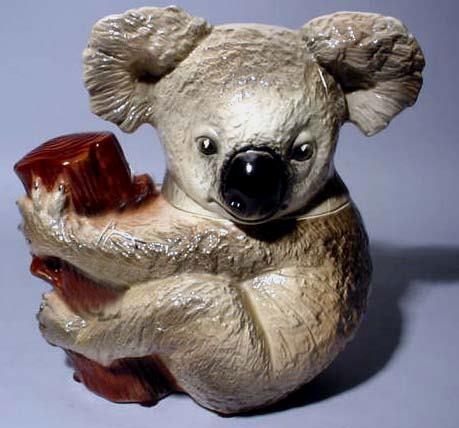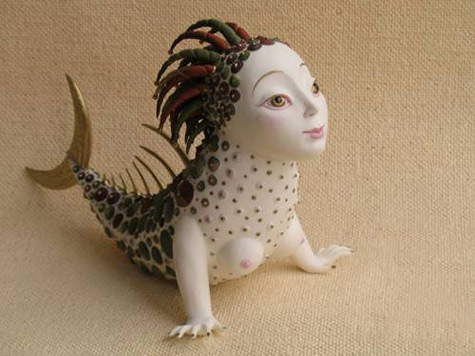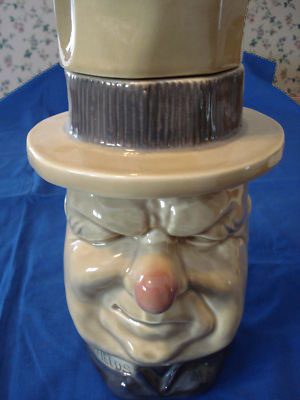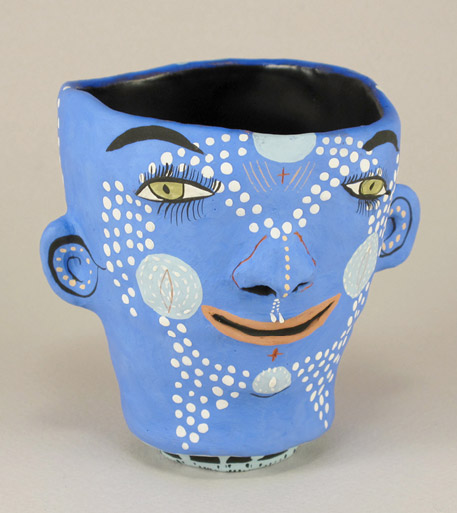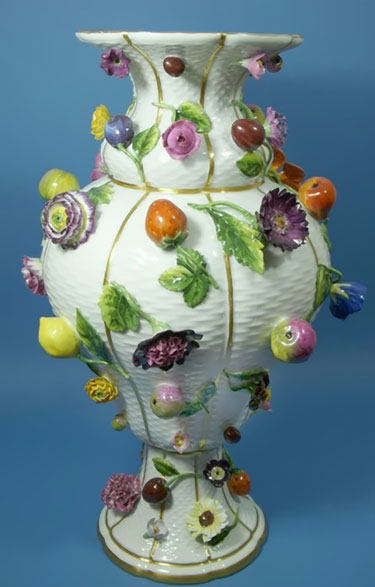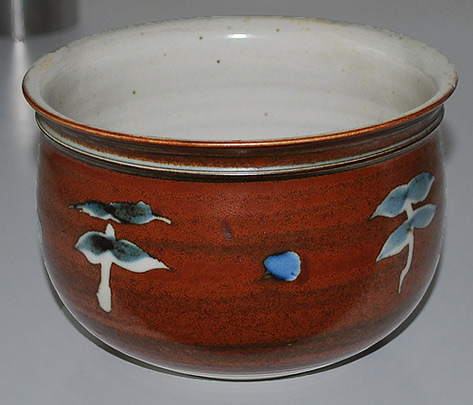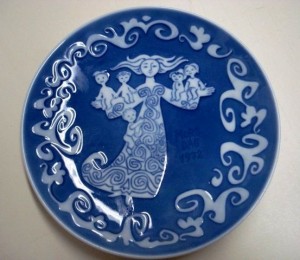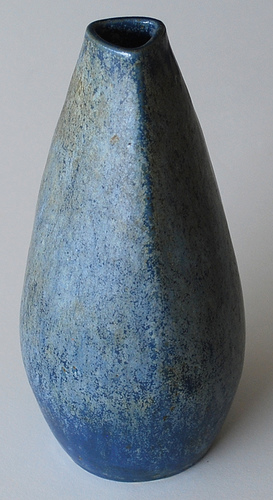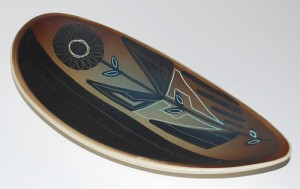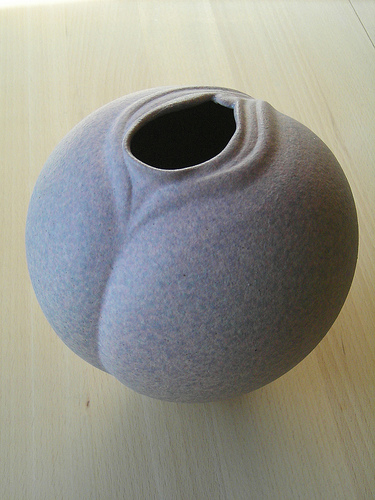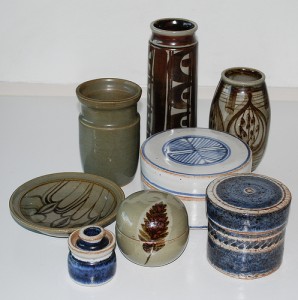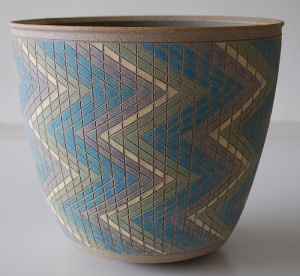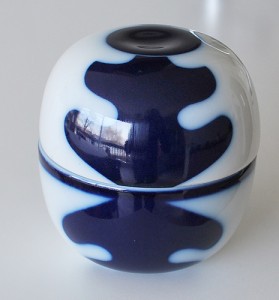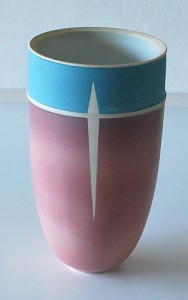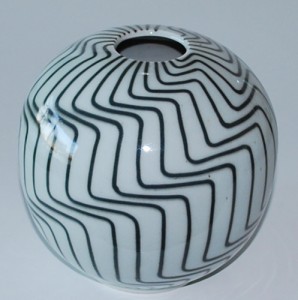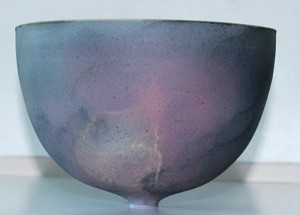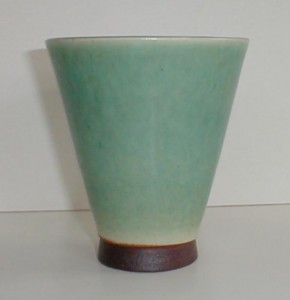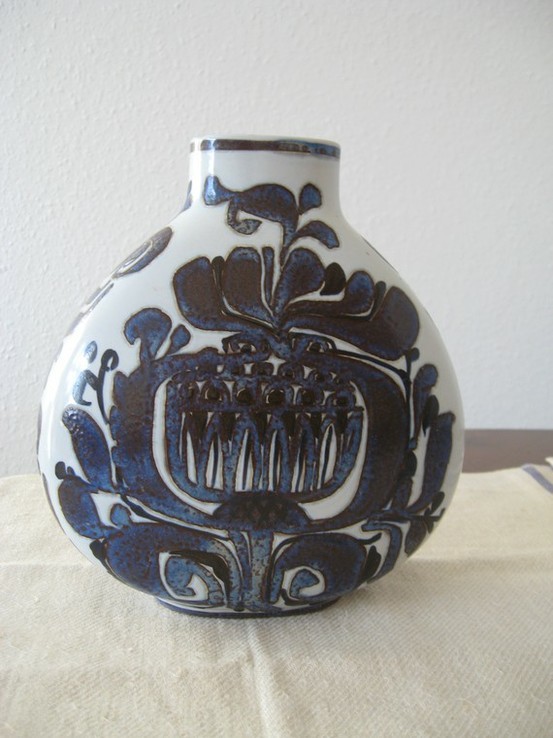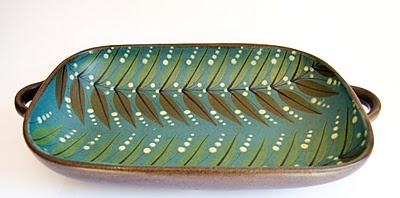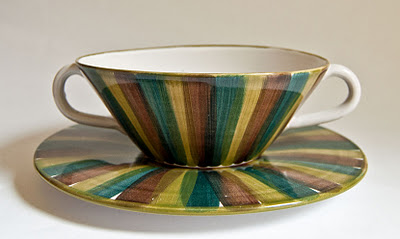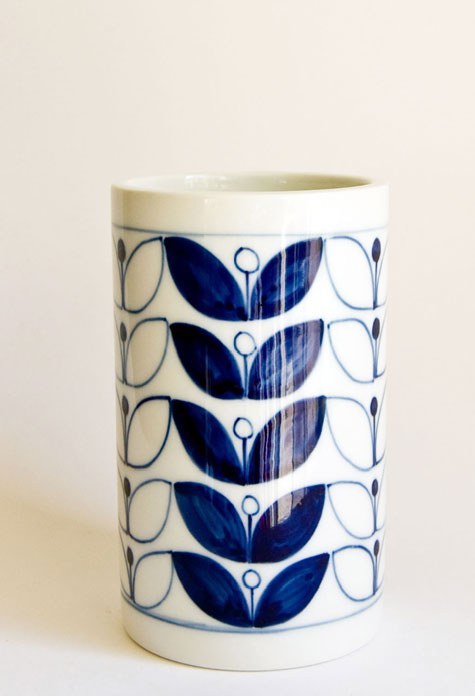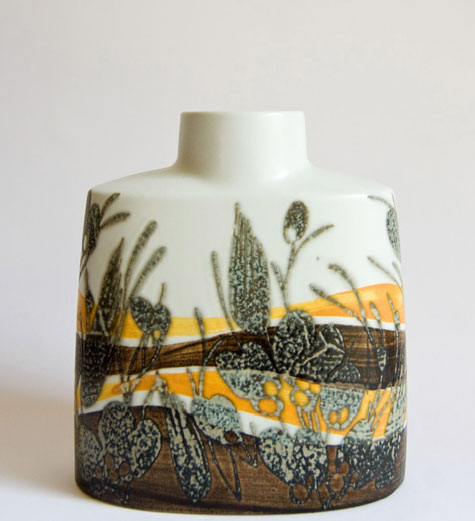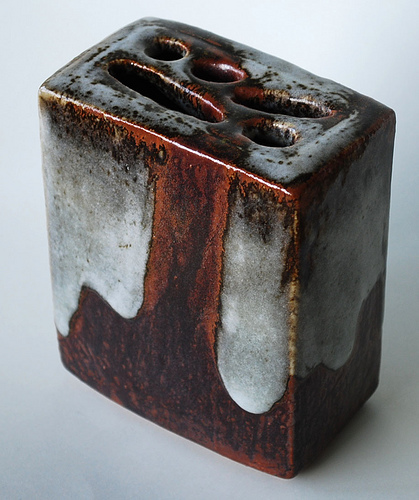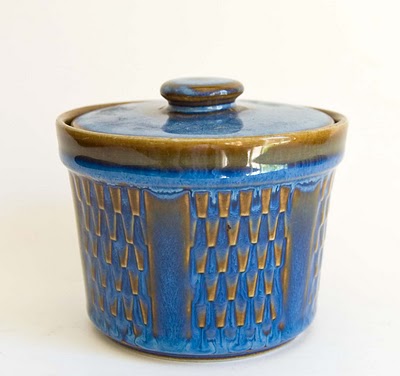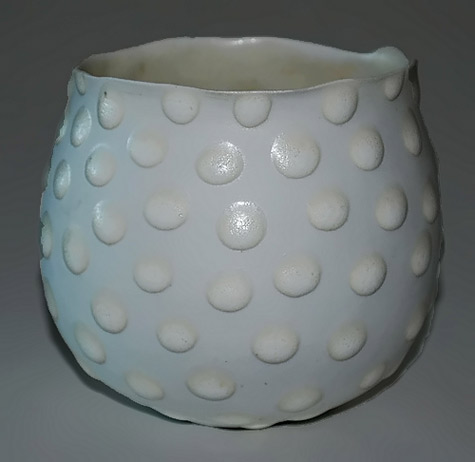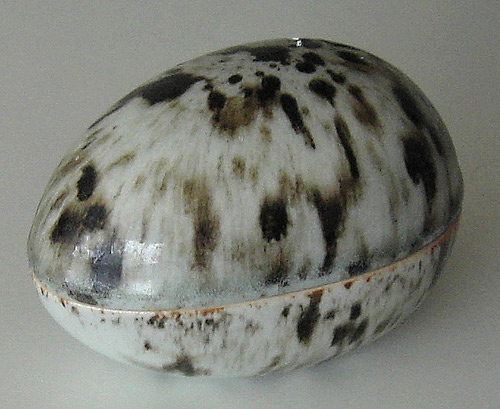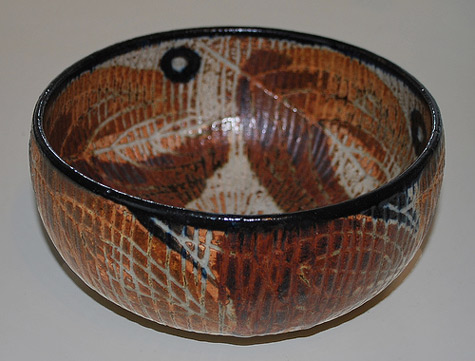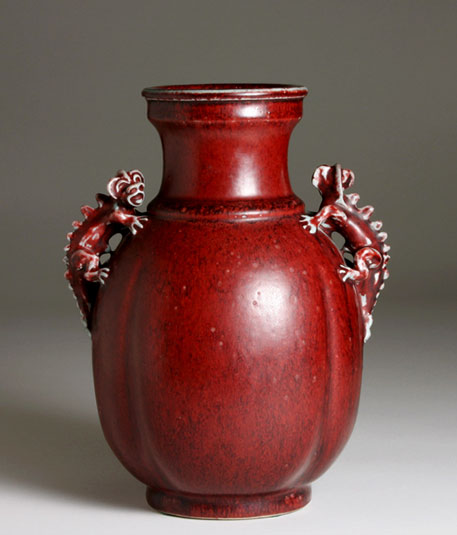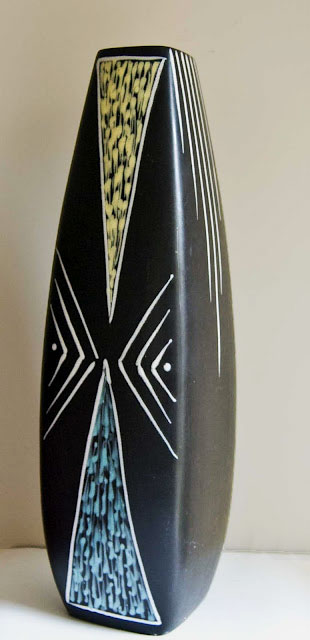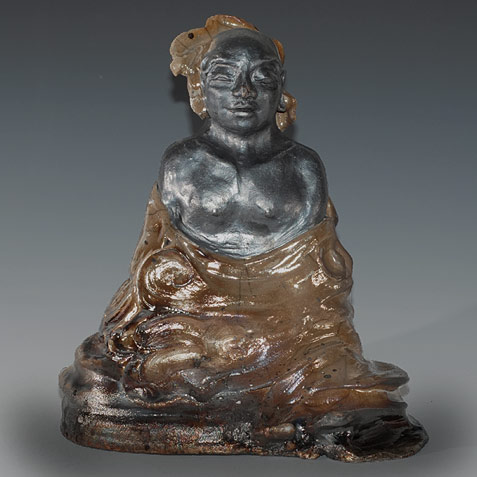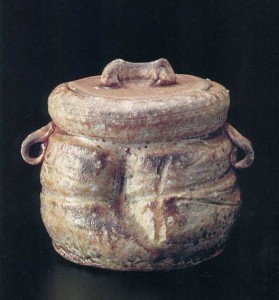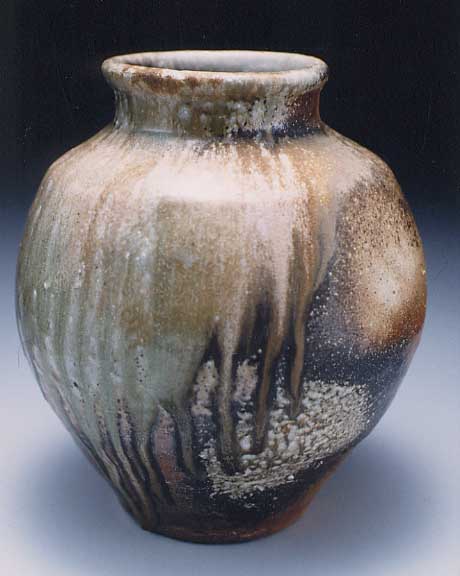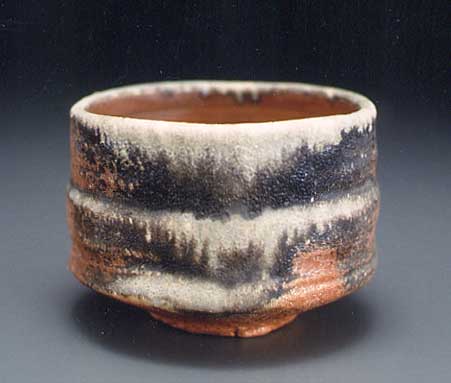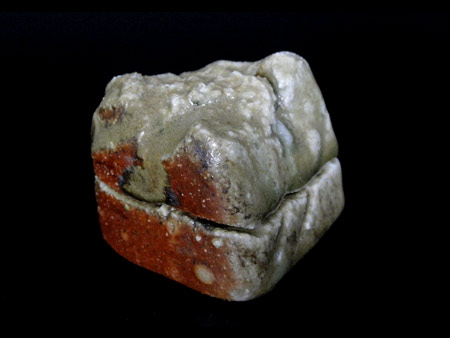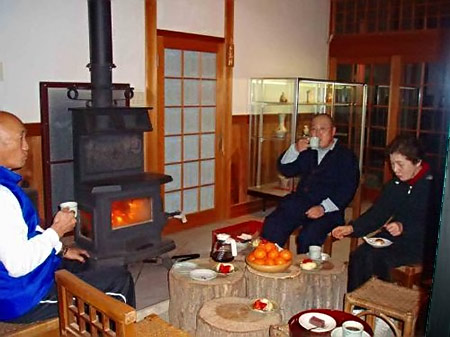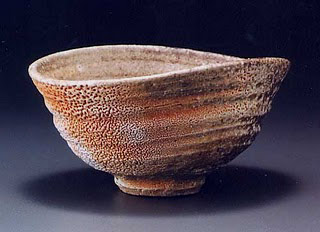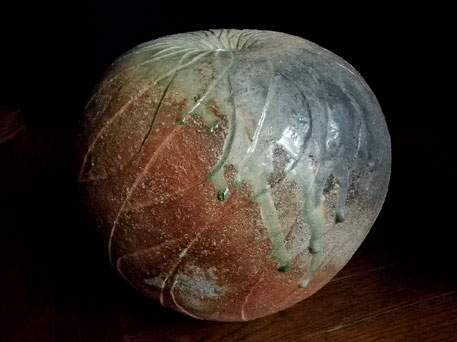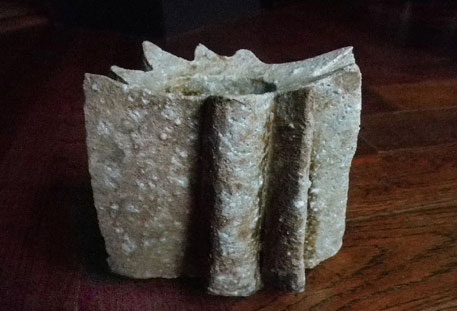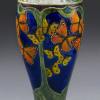The beautiful Buddha art of Anita Feng
Hailing from Issaquah Mountain, which is east of Seattle, ” TheBuddhaBuilder ” ( Anita Feng ) is a unique potter, who primarily focuses on building objects around a Buddha theme. She works intuitively as reflected in the statement, ” if I can move my ideas out of the way and just allow my hands to lead, how much more integrated and alive the work becomes !” She claims “My raku Buddhas offer a synthesis of east and west — the ancient inheritance of Zen meets modern American creativity. They also represent an exploration of the question, what does Buddha look like? After all, the word “buddha” means “to wake up” or “the awakened one”. So what does openness of mind look like? Clay is a perfect medium to explore that question, as it is so open a material to work with. It can be pulled, thrown, molded, rolled–anything! And it is composed of all the elements of life — earth, air, fire, water, metal. Incorporating thirty years of Zen training, plus over thirty years work as a professional potter, along with my life-time involvement in poetry and music, I work the clay into a joyful, sincere and dance-like marriage between east and west.”
I find her Kwan Yin creations true to the female Bodhisattva and her creativity seems boundless. She successfully combines traditional Raku with contemporary techniques, while integrating her Zen influences intrinsically into her art. Observing her pottery is a meditation in itself. Her actual Buddha pieces exude an exquisite subtlety and the results are refreshing and brimming with pure spontaneity.
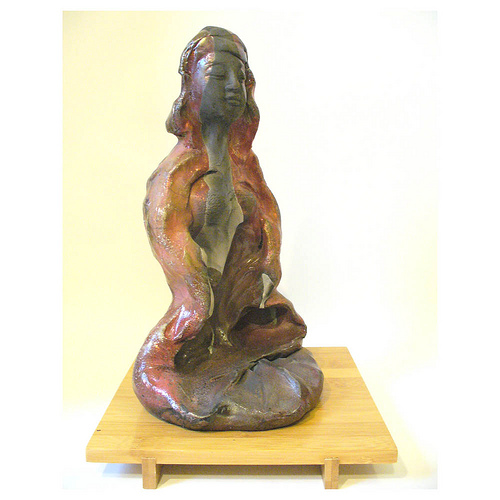
Kuan Yin by Anita Feng
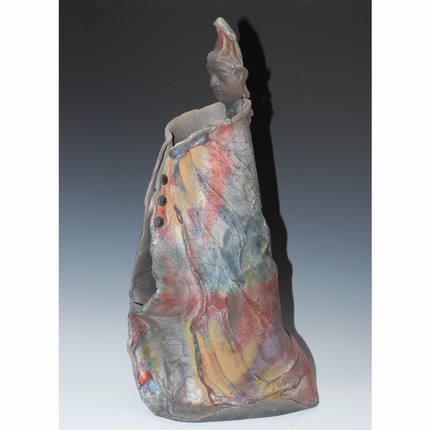
Buddah statue in blue, red copper, silver wonder. 18″ high, 9″ wide
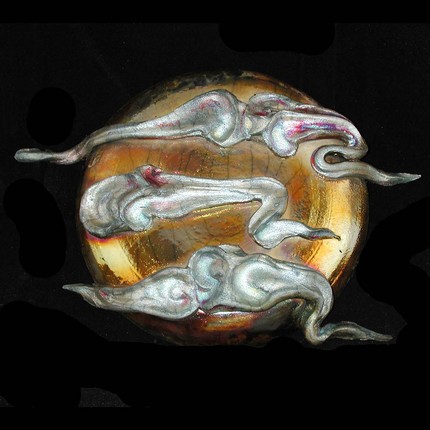
Clouds Passing In Front of a Gold Crackle Raku Moon – Anita Feng
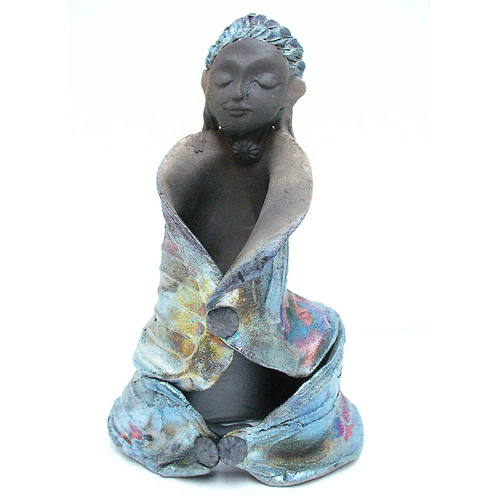
Anita Feng Buddha statue
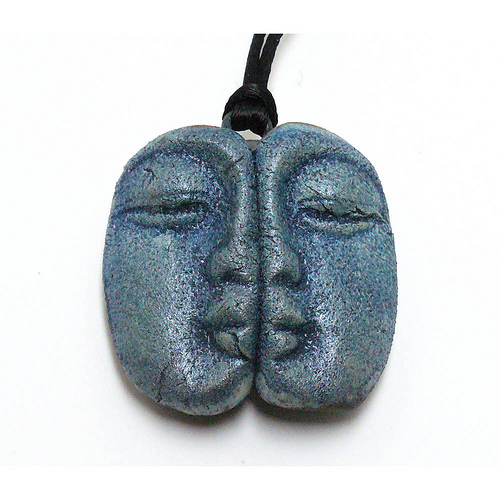
Buddha Pendant
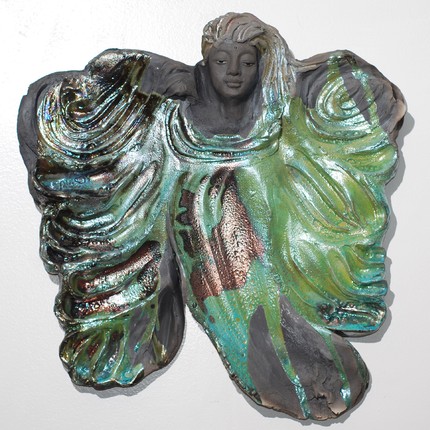
‘Cloud Computing Kwan Yin Goddess Angel’ – Anita Feng
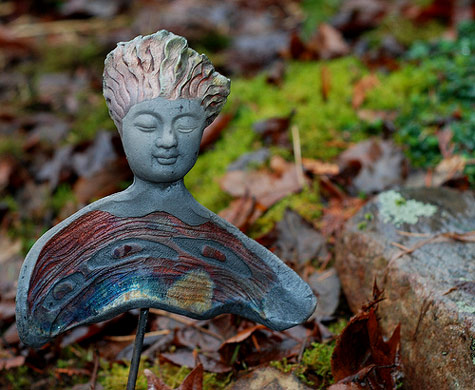
Raku Buddha Garden Art
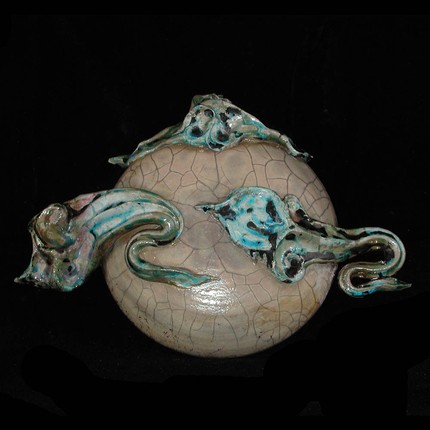
Clouds and Crackle Moon Raku Wall Hanging
11″ wide 8″ high
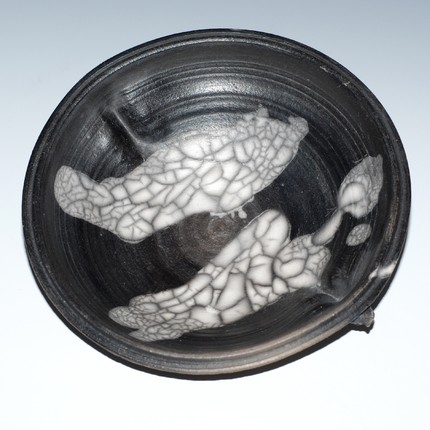
Raku Serving Dish
In Anita’s words :
A gorgeous, softly glowing shallow serving dish or bowl! Thrown on the wheel with embellished “handles” on the side. Decorated using the technique known as “naked raku”, which means that there is no glaze on the piece at all. The raw surface was burnished carefully before firing the first time. Then a thick slip was applied before the second raku firing. Afterwards, the slip flakes off and, voila, a lovely crackle pattern is revealed.
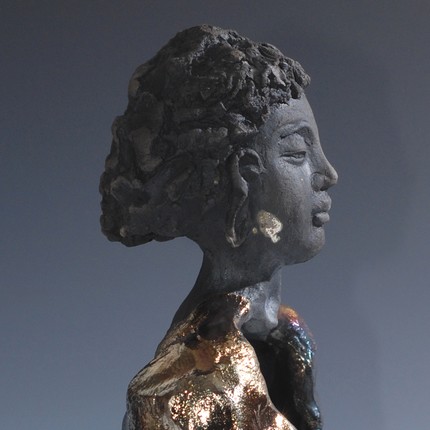
‘Pottery Buddha With a Golden Beauty Mark’ – Anita Feng
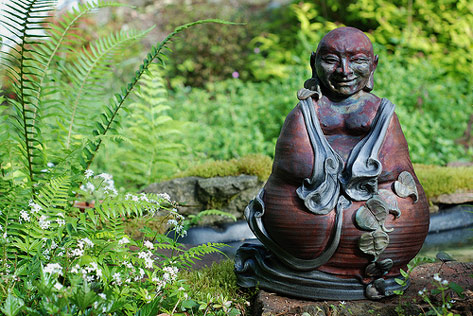
‘Laughing Buddha Pond’ – statue by Anita Feng
Seated Buddha – Anita Feng
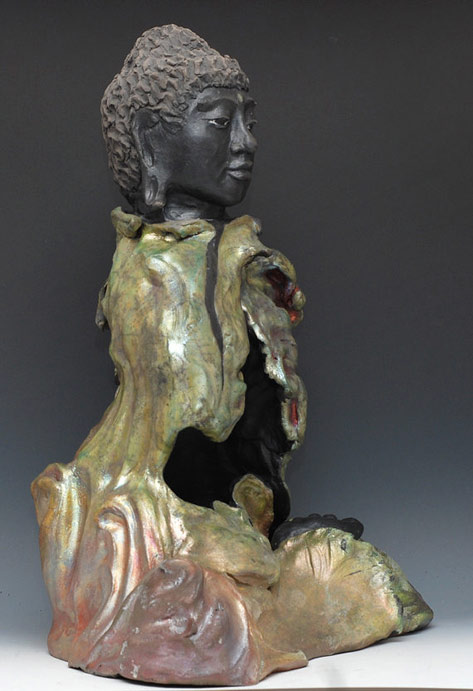
‘Buddha with Colour’ sculpture – Anita Feng
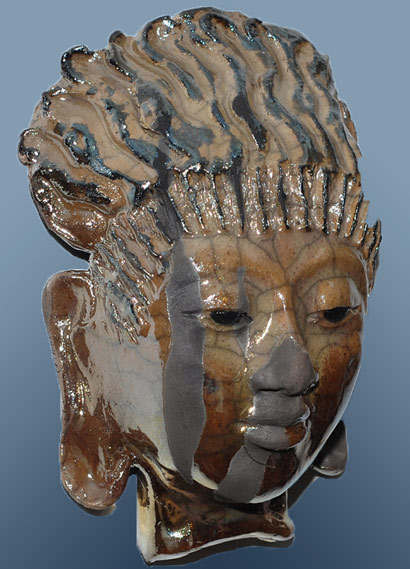
‘Wall Art Buddha Head’ – Anita Feng
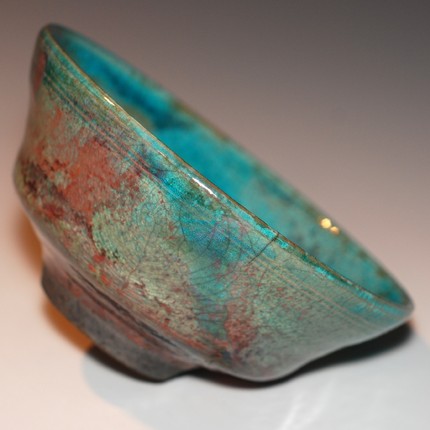 Raku Tea Bowl
Raku Tea Bowl
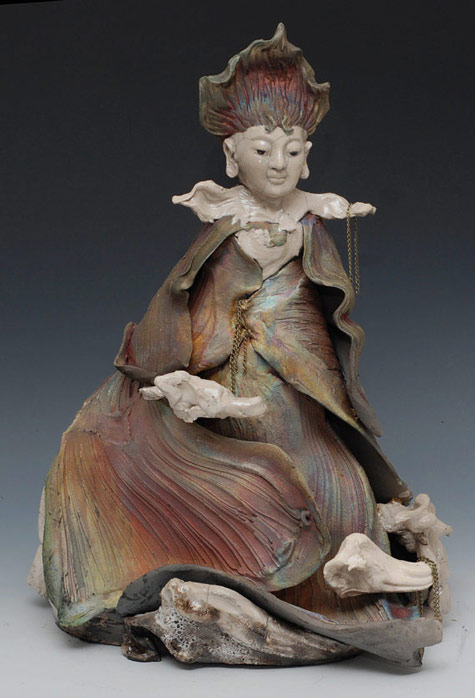
‘Kwan Yin Goddess Statue in the Clouds’ – Anita Feng
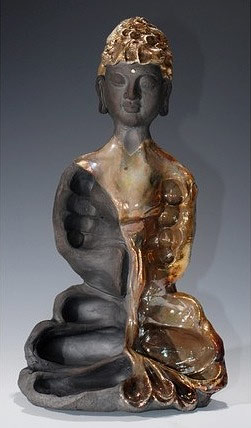
‘Kwan Yin Emerging From the Golden Stream’ – Anita Feng
–
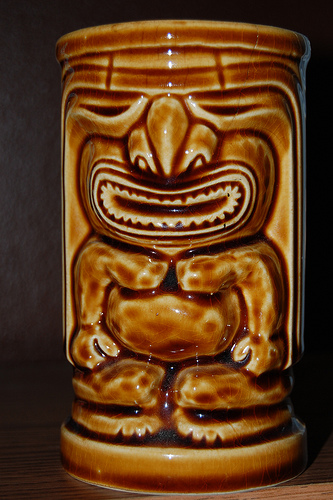 As art became more commercialized, and the culture industry became more manipulated, some feared the popularity of kitsch was a threat to culture. With the emergence of postmodernism in the 80’s where the borders between high art and kitsch became more blurred and a more ironic appreciation of the corny style of kitsch developed, it became more accepted as a valid art form. The demand for the outlandish, tacky and pretentious has not abated and there are still many fervent collectors out there. Kitsch collectibles still turn up at garage sales, church fetes and op shops and are a worthwhile investment if you happen to chance upon one of these desirable, audacious, objects of art.
As art became more commercialized, and the culture industry became more manipulated, some feared the popularity of kitsch was a threat to culture. With the emergence of postmodernism in the 80’s where the borders between high art and kitsch became more blurred and a more ironic appreciation of the corny style of kitsch developed, it became more accepted as a valid art form. The demand for the outlandish, tacky and pretentious has not abated and there are still many fervent collectors out there. Kitsch collectibles still turn up at garage sales, church fetes and op shops and are a worthwhile investment if you happen to chance upon one of these desirable, audacious, objects of art.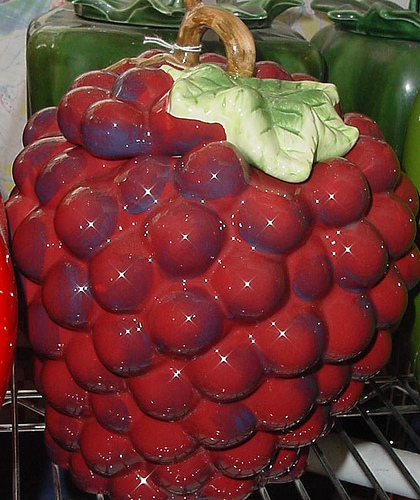 Bunch of red grapes lidded jar
Bunch of red grapes lidded jar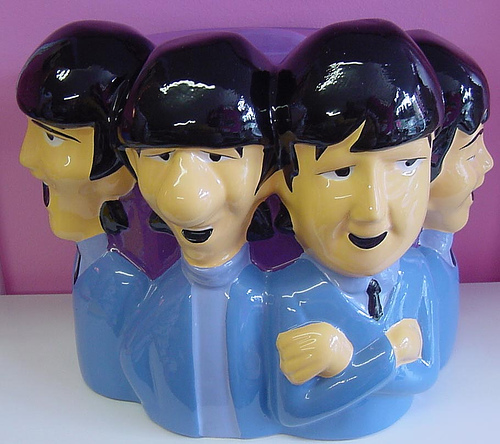
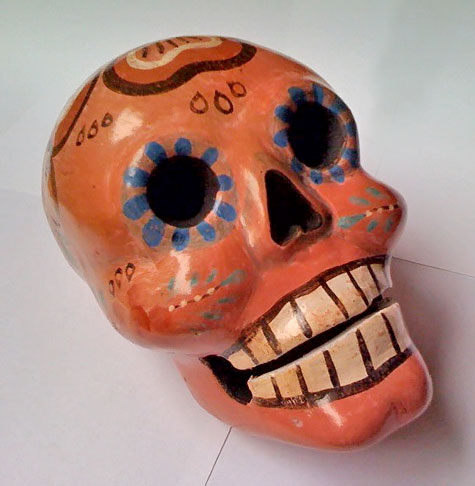
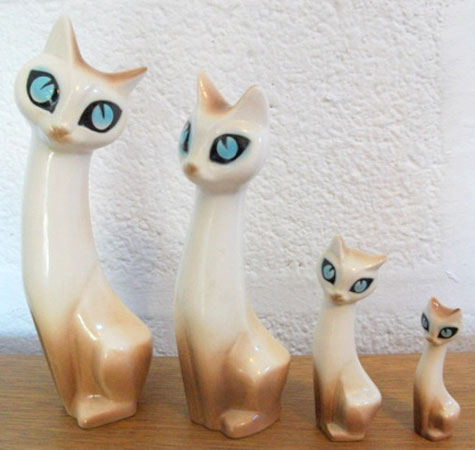 1950’s Cat family figurines designed by Marion Campbell for Hornsea Pottery
1950’s Cat family figurines designed by Marion Campbell for Hornsea Pottery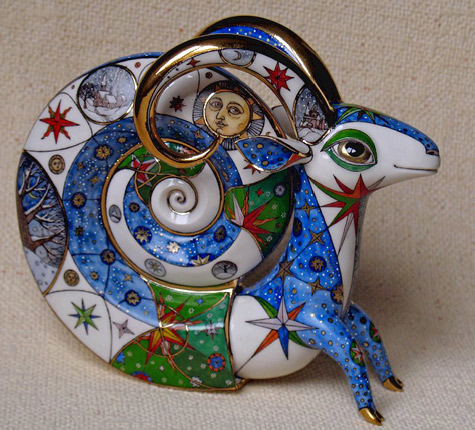 Capricorn see Anya Stasenko and Slava Leontiev
Capricorn see Anya Stasenko and Slava Leontiev

